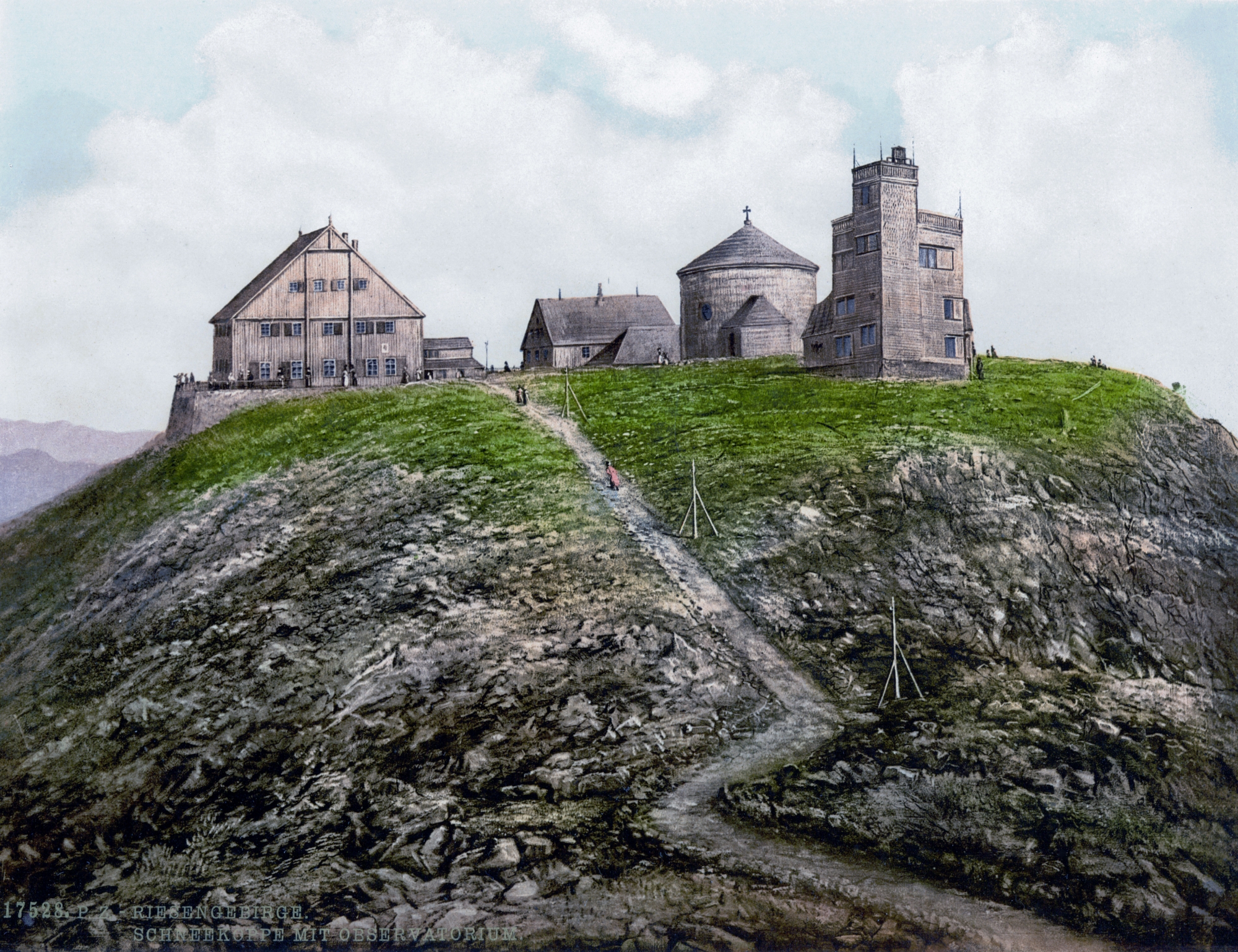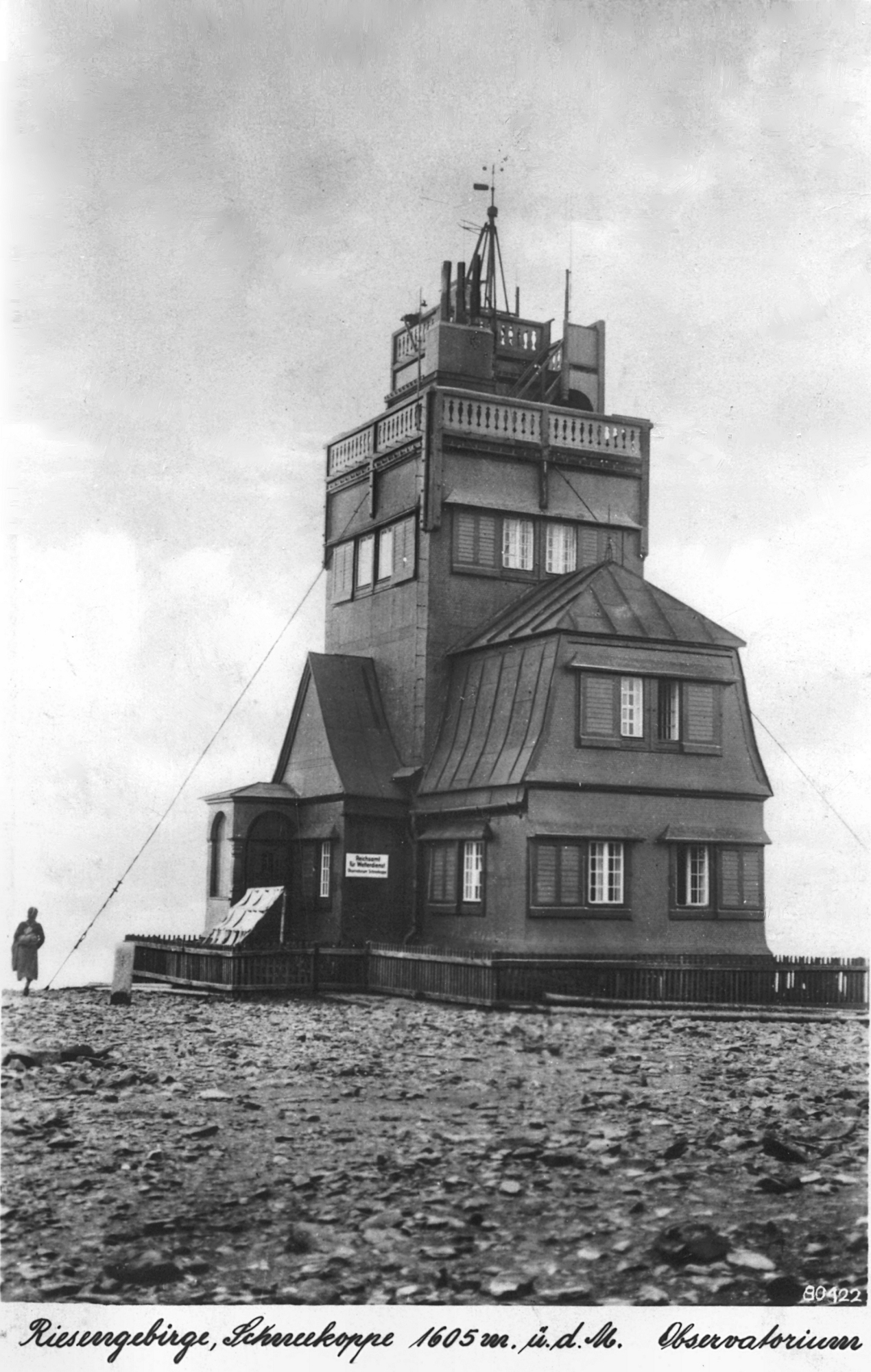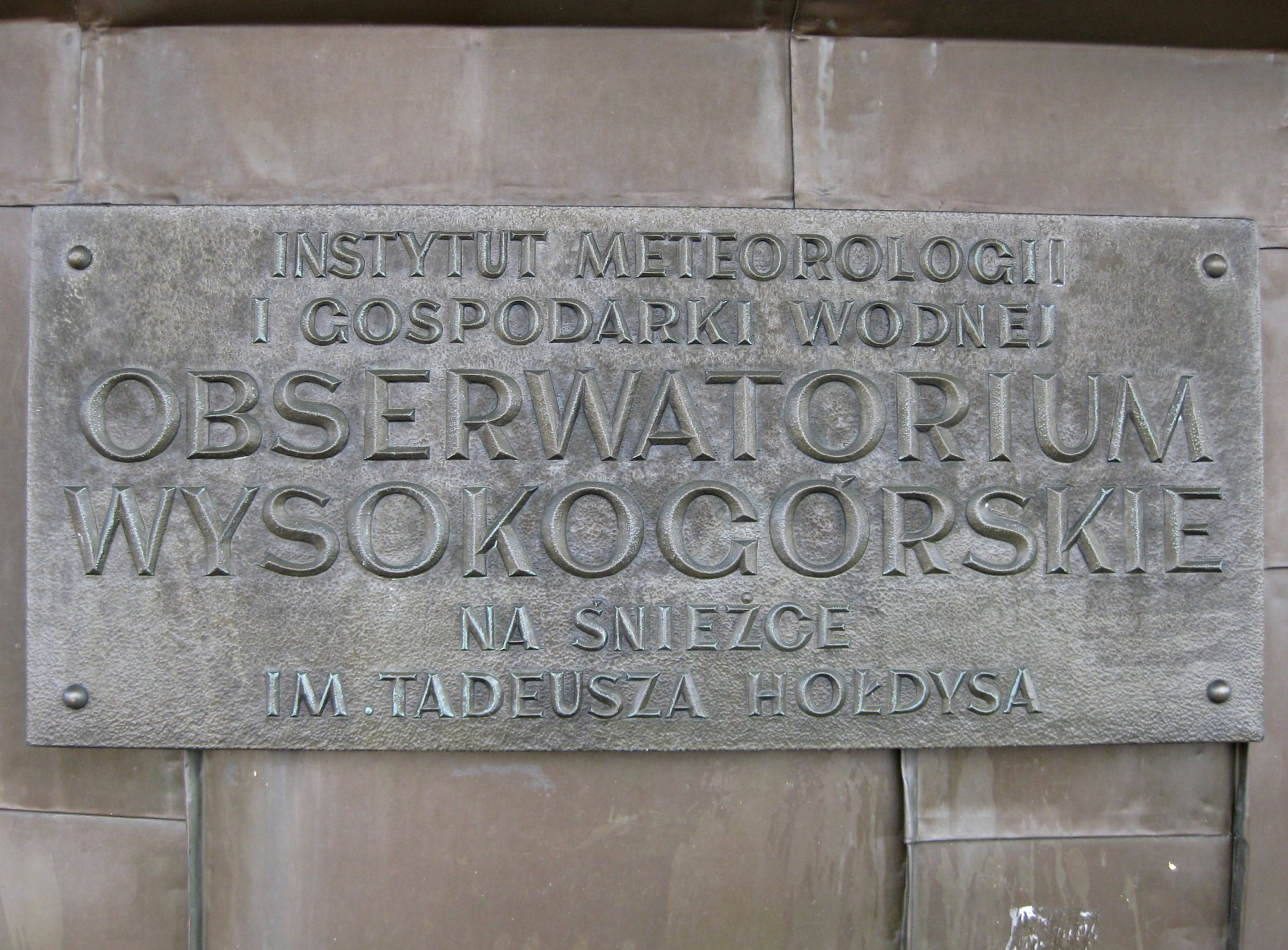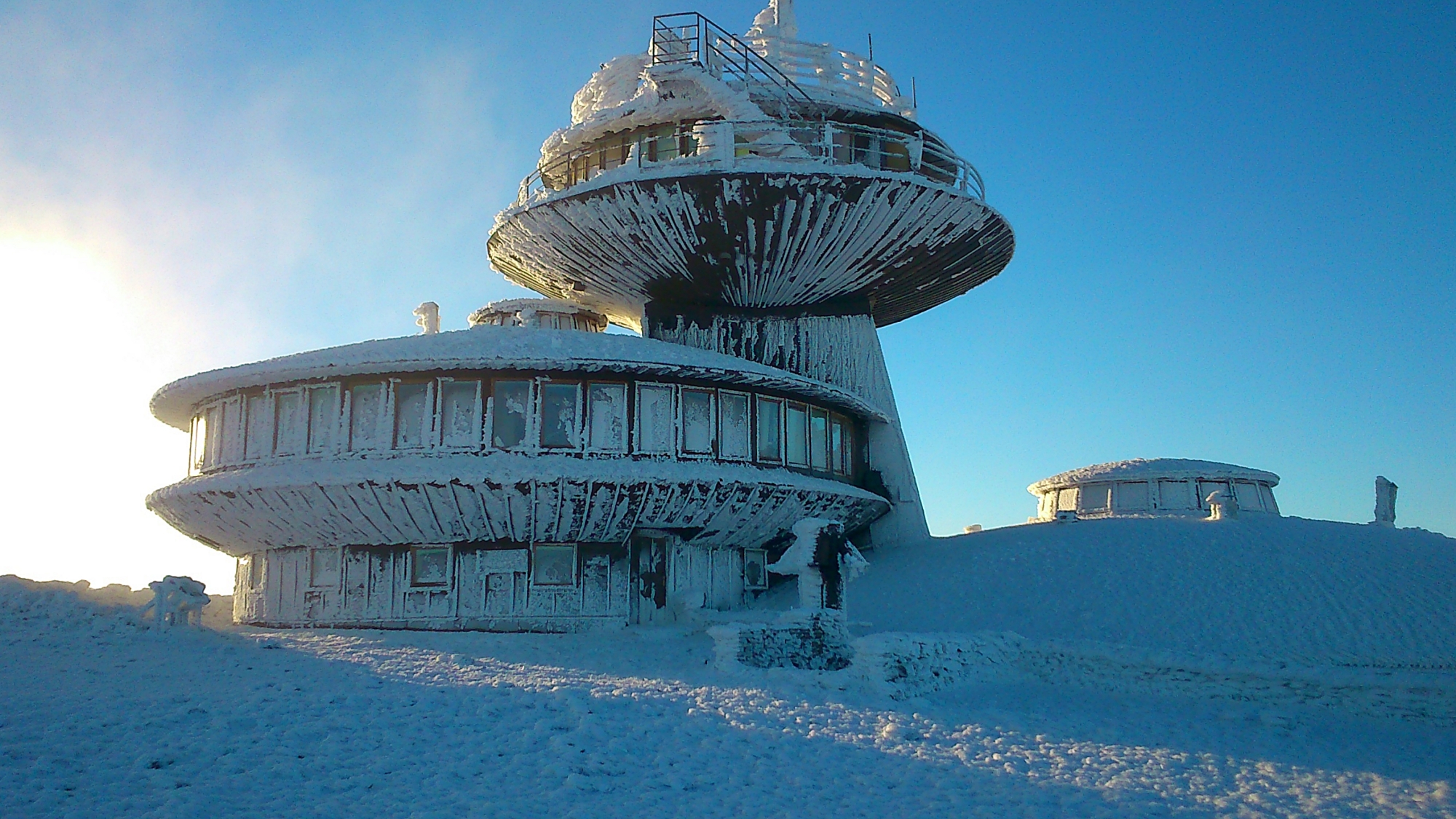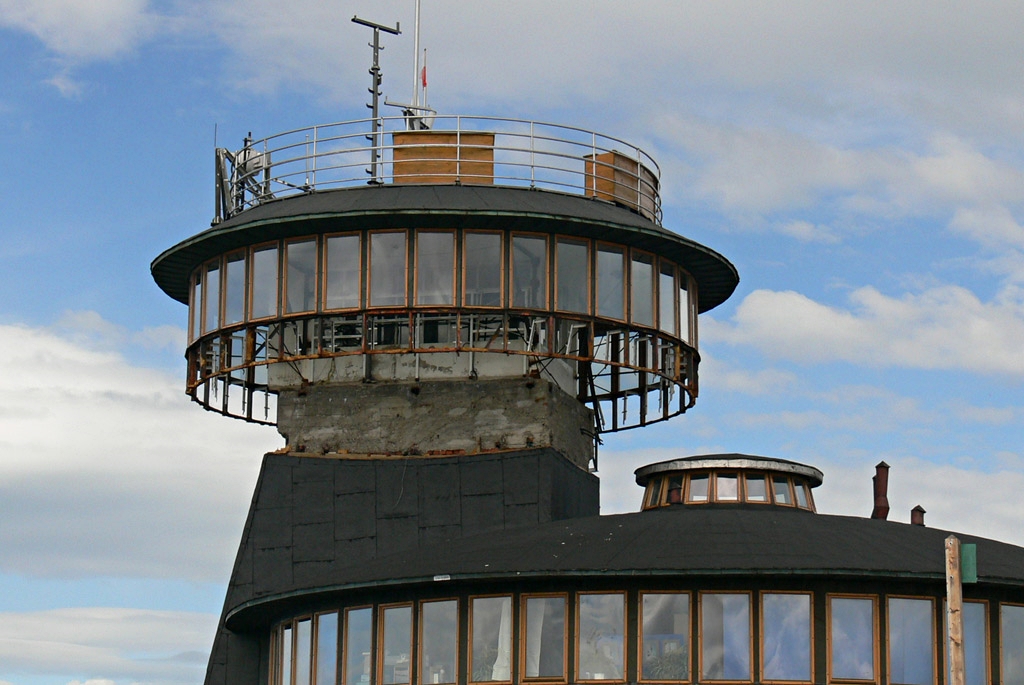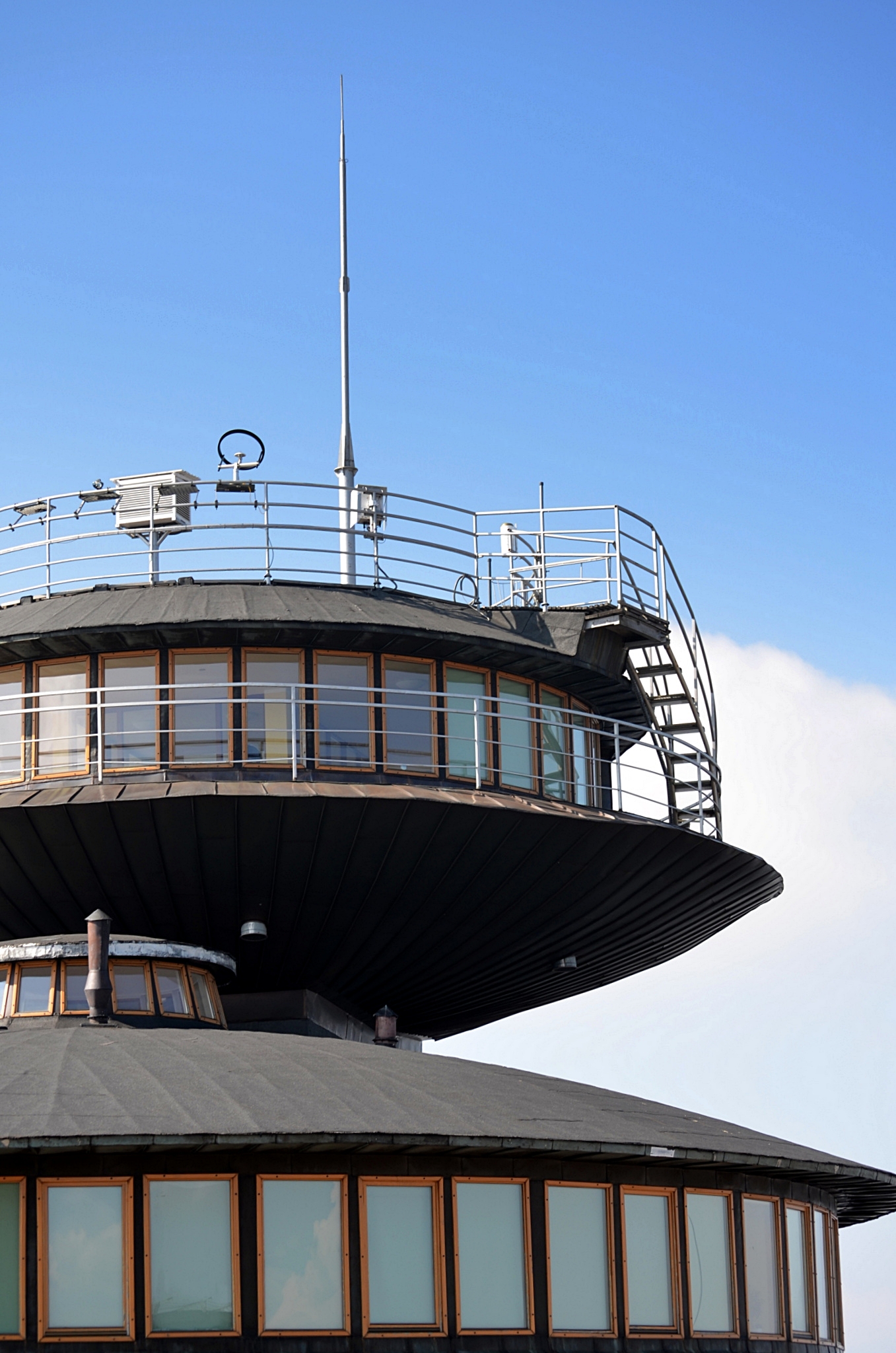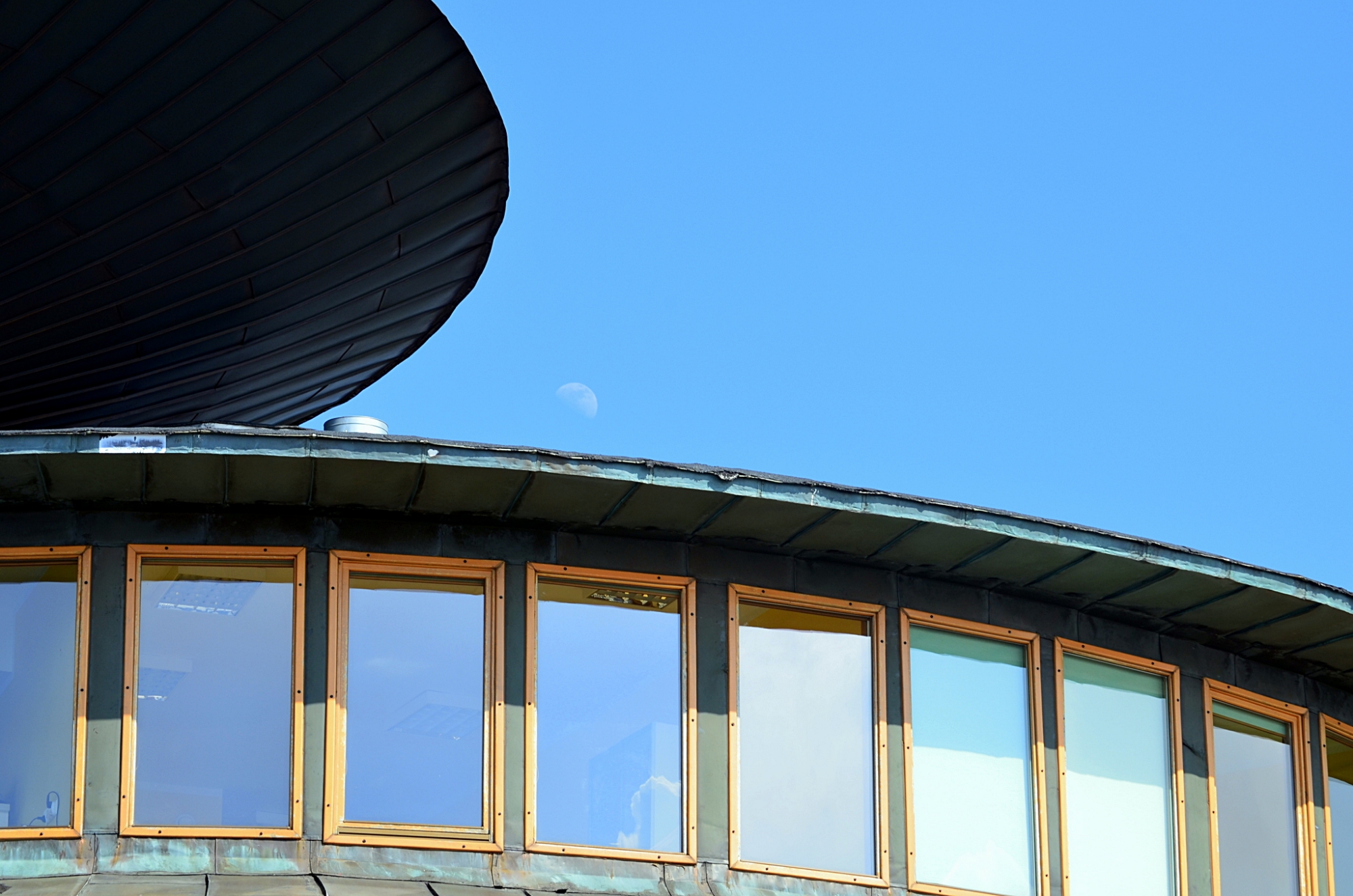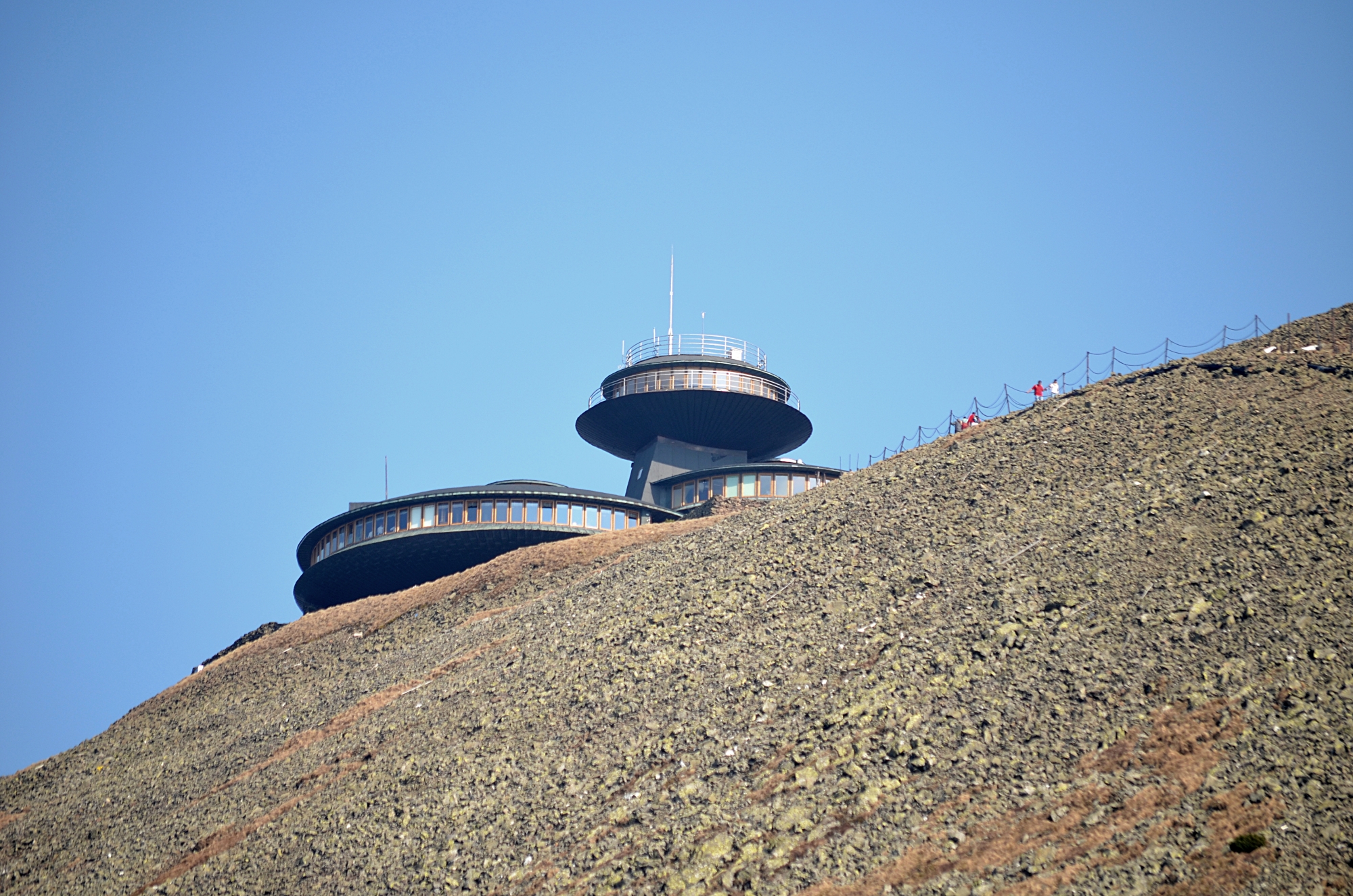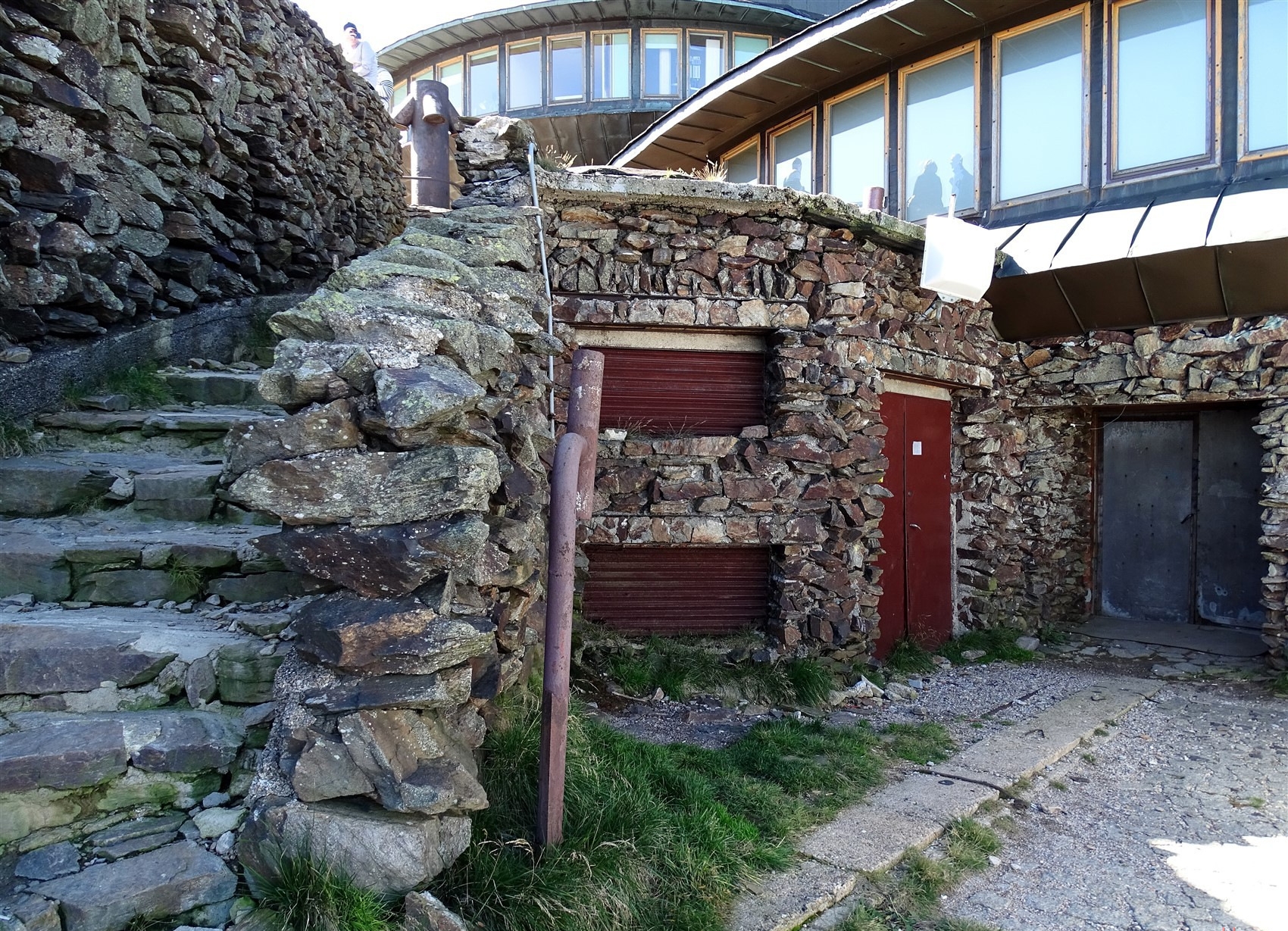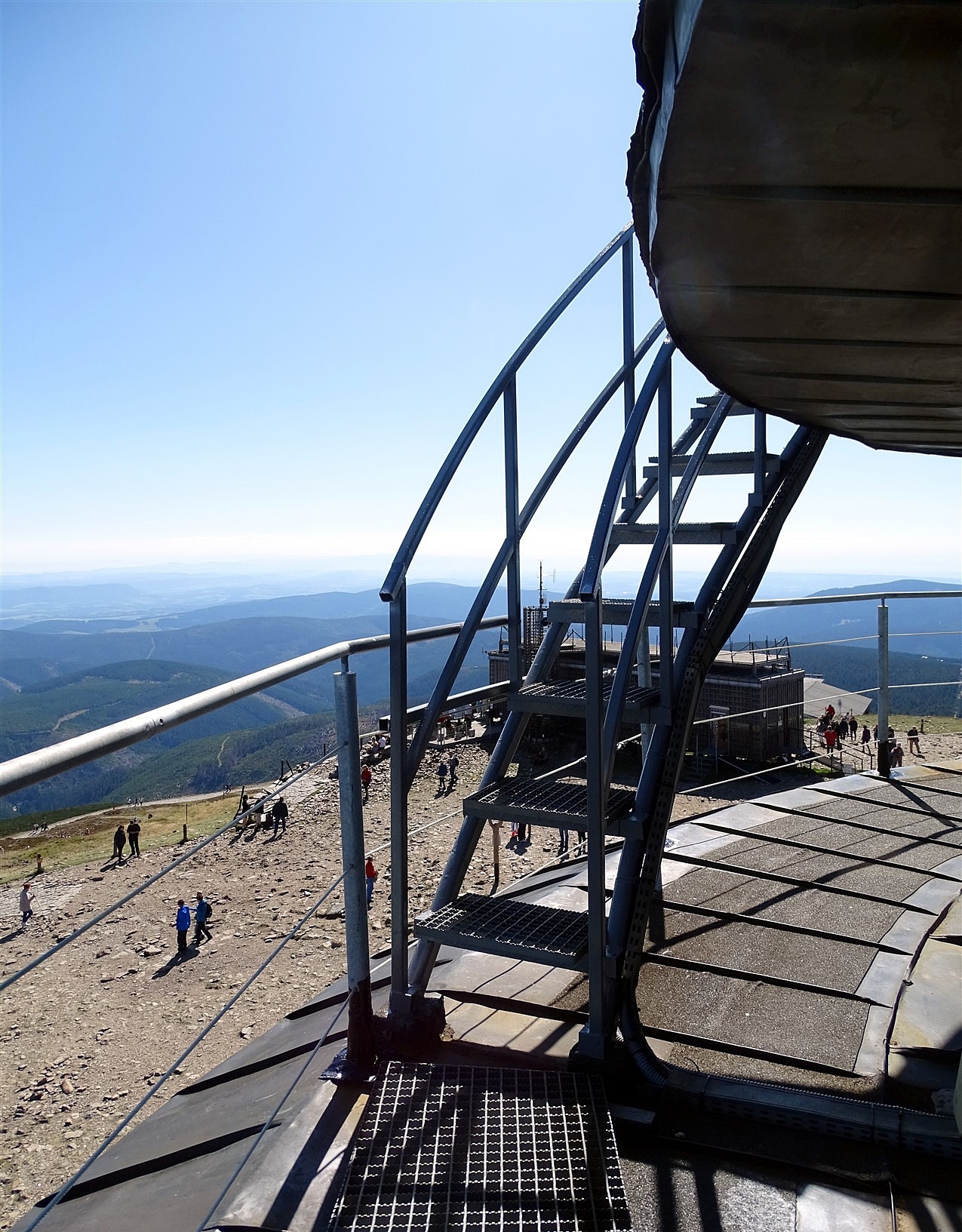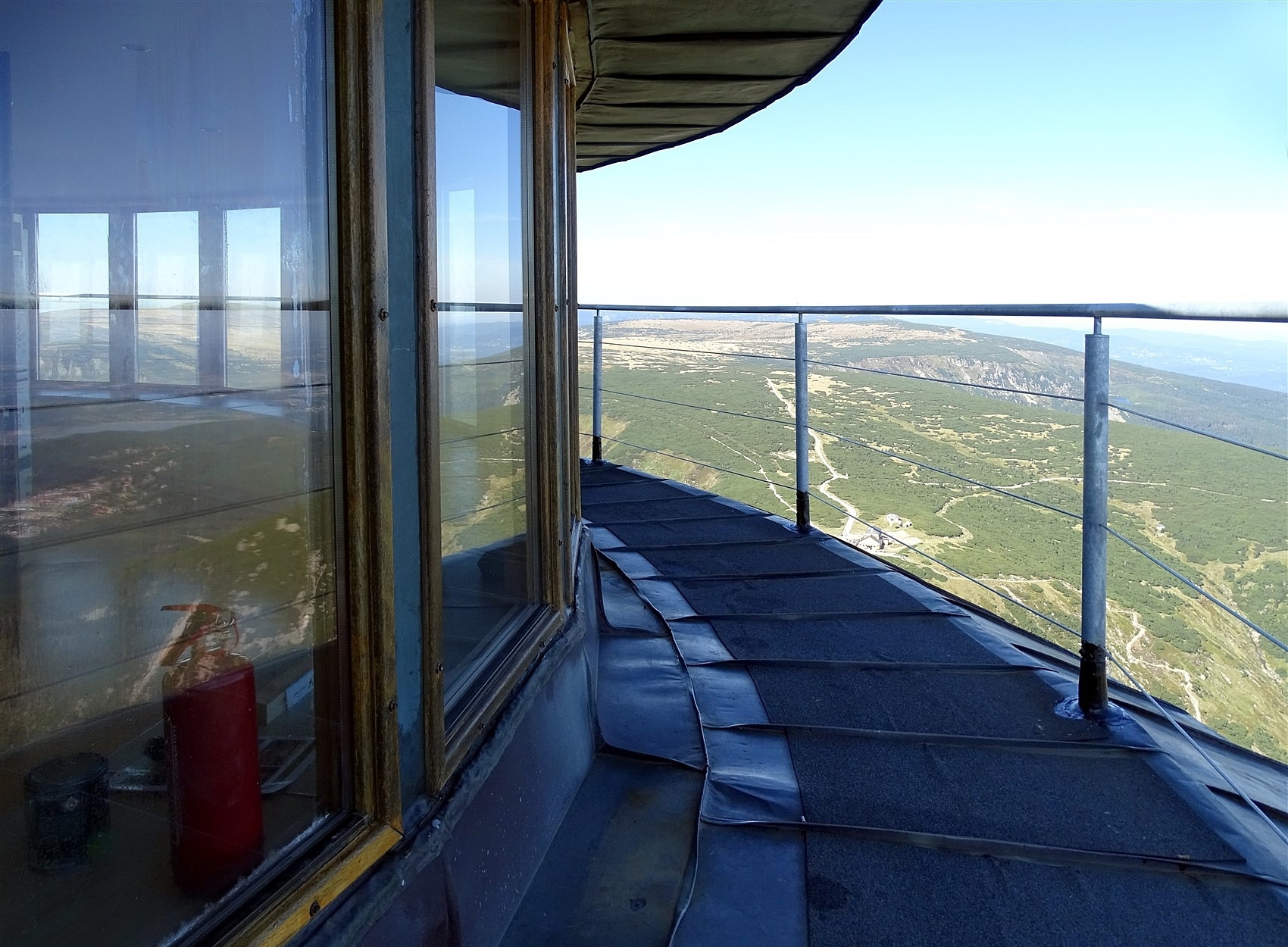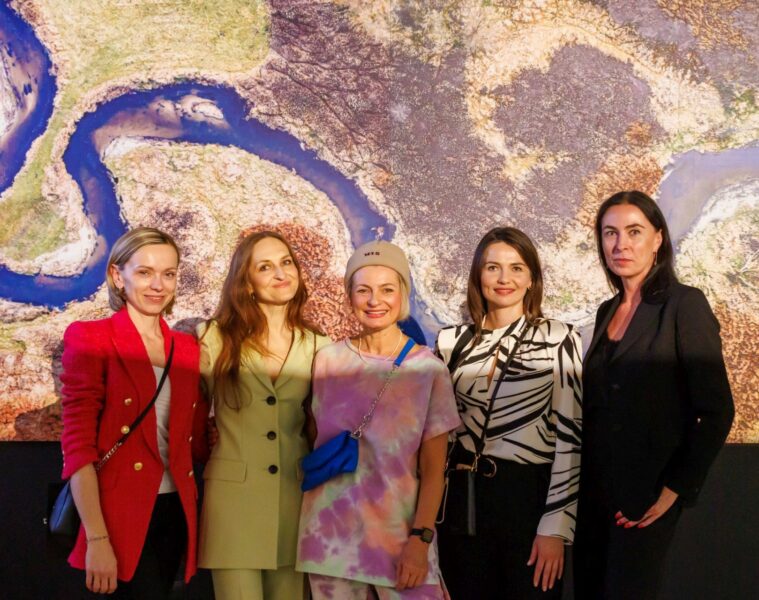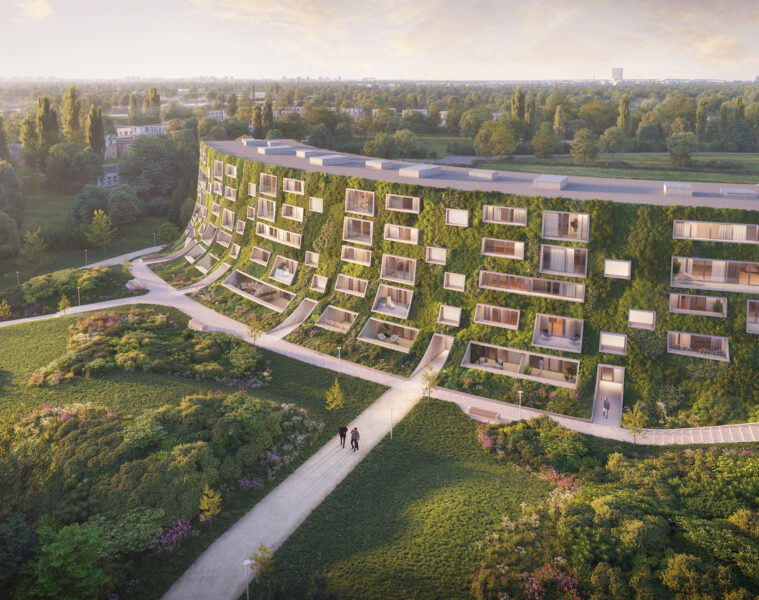The Śnieżka Observatory is an undeniable icon of the Karkonosze Mountains and one of the most distinctive architectural structures ever built in Poland. This year it celebrates its 50th anniversary. Despite half a century in metric, thanks to its avant-garde form associated with UFOs, the building is still appreciated by professionals and the public alike.
The High-Mountain Meteorological Observatory on Śnieżka is a facility of the Institute of Meteorology and Water Management, located at 1,602 metres above sea level. Since 1985, the observatory has been named after Tadeusz Hołdys, its long-time director. When the weather is good, views can be enjoyed from Sniezka over a distance of several tens of kilometres. The observatory is an excellent place to analyse climate change due to its continuous measuring sequence since 1880. The data is unique in that the summit of Sněžka is free of pollution associated with human activity.
The observatory. Photo by Stanislav Dusík, CC BY-SA 4.0, via Wikimedia Commons

The history of meteorological observations on Sněžka dates back to 1824. Initially, they were conducted in the St. Lawrence Chapel. In 1897, a project was drawn up to build a separate observatory building. Work began two years later. The building was used for measurements from 1900 as a meteorological observatory. It had the shape of a three-storey tower 16 m high with two small terraces on the roof. The building survived both world wars. In 1945, the Polish meteorological service began conducting its observations there. The building was subjected to the harsh atmospheric conditions at the summit over the years, which did not go unnoticed in its construction.
The former chalet – Preussische Baude – and St Lawrence Chapel in 1938 and 2021. Photo by Jojo, public domain, via Wikimedia Commons and Scars of Poznań
In the mid-1950s, it was decided to build a new observatory, but implementation did not begin until the second half of the 1960s. Measurements in the old building were completed in 1976. At that time, the plan was to dismantle it and transport it to another location, where, once assembled, it would serve as a museum dedicated to meteorology. Two years later, the building was handed over to the city of Karpacz for a “symbolic zloty”. However, plans to relocate it never materialised. In 1989, the building, which had been deteriorating for 13 years, was demolished in a way that did not include its reconstruction.

The new observatory building in the modernist style was erected between 1966 and 1974 on the site of a demolished chalet from 1862. The structure was made of reinforced concrete, steel, aluminium and glass. The designers of the building were the architect Prof. zw. dr hab. inż. Witold Lipiński and the architect Dr. hab. inż. Waldemar Wawrzyniak. A few years after the opening of the silver discs glittering in the sun thanks to their aluminium covering, many modifications were made that were not in keeping with the architects’ original futuristic design, including covering the entire building with black tar paper. The original striking aluminium quickly cracked and it was not decided to replace it with similar stainless steel.

The building has the form of three disc-shaped masses connected to each other. The structure is a steel truss, centrally supported on a concrete foundation. An observatory and a restaurant were located in the new building, but a hostel was never established. Its interesting and rich decoration was designed by the Visual Arts Studio from Wrocław. The most characteristic elements – preserved to this day – include an openwork ceiling with hexagonal meshes, artistic wall installations made of metal or a partition made of coloured glass.


Since its construction, the building has been controversial, not least because of its lack of reference to mountain and Sudeten architecture. However, it was part of the trend of futuristic buildings being erected in the Sudetenland in what was then Czechoslovakia in those years. The new observatory building won an award at the World Architecture Exhibition in Mexico in 1975. In 2009, meteorologists working at the observatory noticed cracks in the wall and a bulge in the floor of the upper observatory disk. Shortly afterwards, a building disaster occurred. There was a detachment of the cantilevers from the reinforced concrete shaft with concomitant damage to the enclosure. At the end of the same year, the reconstruction of the disk was completed. However, in 2020, the roofing was damaged due to strong winds.
In June 2020, the building was entered in the register of historic buildings.

The observatory on Śnieżka has been inaccessible to tourists for years due to the poor technical condition of the building. In 2019, conservation works were carried out. Unfortunately, the actual renovation has still not started and it is unclear when this will happen. Originally, it was assumed that the construction work would start in 2023 and that the New Sněžka would be ready in 2025. However, the investment has caught quite a delay.
Source: wroclaw.pl, karpacz.net
Read also: Travel | Architecture in Poland | Modernism | Interesting facts




